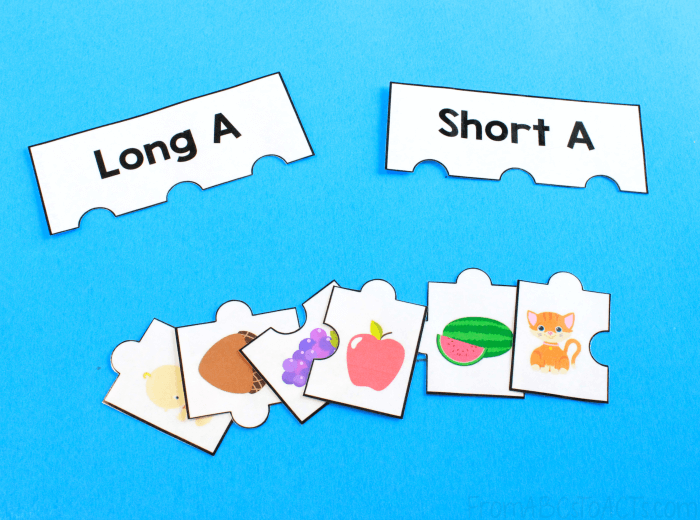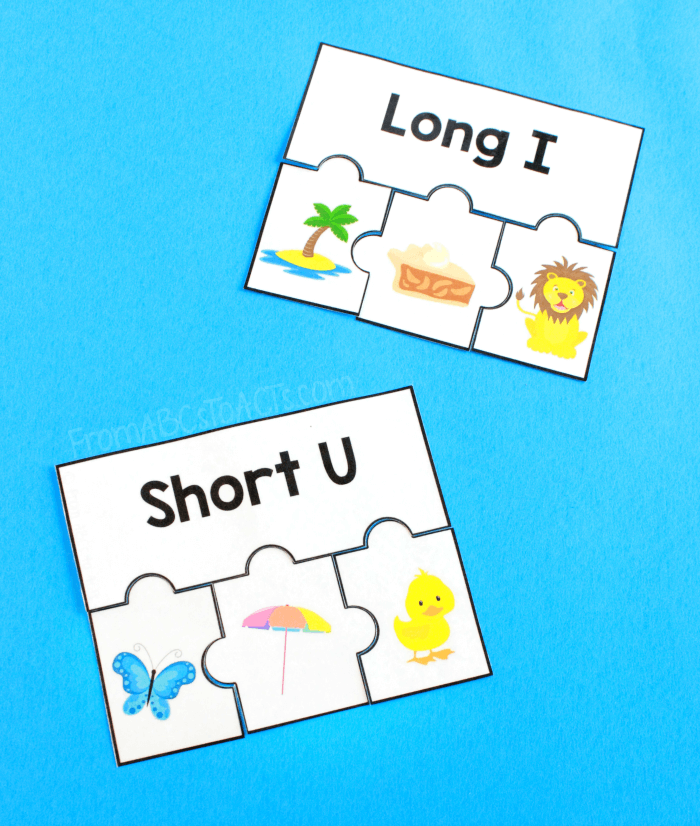This post may contain affiliate links. For more information, please see my full disclosure policy.
Learning to read can be a challenge for some kids and the vowels can play a big part in that.
Think about it.
First, you start by learning the letters of the alphabet, all 26 of them. Then, you move on and start to learn that each of those letters also has a sound and you have to try to remember all of those, and then the English language throws a wrench into your plans in the form of vowels and tells you that these special letters all have multiple sounds.
It’s no wonder that some kids find this to be a little tricky.
Fortunately, though, we’ve got some vowel sound puzzles to share with you today that make long and short vowel sounds easier and more fun than ever before!

Vowel Sound Puzzles
Learning the long and short vowel sounds was a bit of a struggle in our house.
For the longest time, we struggled to move past the initial short vowel sounds that we had originally learned and use the new long sounds when sounding out words as well.
It took seeing the words in picture form and then trying to distinguish the sound for the concept to finally click.
When it did, though? Pure magic.

These vowel sound puzzles have now seen a great deal of use as they very quickly became one of our favorite practice tools.
Included in this set, you’ll find 10 vowel puzzles, 2 for each vowel, made up of 4 pieces each.
The first in each set is the long version of the vowel and the second is for the short.

The smaller pieces all have a picture which allows your child to say the word themselves, while listening to the sounds as they say it, before trying to guess the vowel sound.
Just cut them out, laminate for durability, and they’re ready to use!
ALSO AVAILABLE IN OUR TPT STORE
Now, you can use these puzzles all at once for some extra practice if they’ve already learned the vowel sounds, but if they are just starting to learn them or are struggling with them at all, start out with a single set (i.e. Long A and Short A).
As the child picks up a piece, have them say the word slowly as this will allow them to actually hear the sounds that are present in the word.
Once they’ve mastered the first set, simply move on to the next until they’ve got them all down.
